Ruth Snyder, housewife and murderer
Ruth Brown, later to become Ruth Snyder, was born in Manhattan in 1895. She came from a working-class family but was determined to better herself. So though she had to leave full time education around the age of fifteen she got a job working at a telephone company during the day and took classes in business and shorthand at night. These studies landed her a job working as a stenographer at Cosmopolitan Magazine, [1] one of several magazines owned by William Randolph Hearst. One day, entirely by chance, she dialed a wrong number and Albert Snyder answered. Albert was not in the best of places at the time. He had been involved for ten years with a woman named Julie Guishard, and the two had become engaged but she had died of pneumonia only a short time before the wedding. As a result of this stress, Albert went on a tirade against this person who had cold called him – but when Ruth gave a distressed apology, he felt bad and apologised right back. The two got to talking, and the next day Ruth called him again – this time, deliberately.
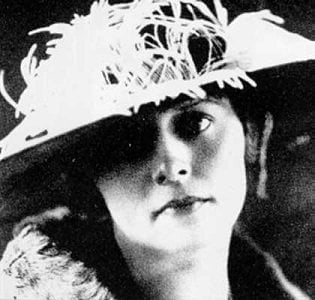
After a few days the pair met up in person, and Albert was charmed by the lively blonde girl. He was the art director at Motor Boating Magazine, and he got her a job there as a secretary. The pair soon began dating, and in 1915 they were married. Albert was 32, while Ruth was still only 20 years old – not an unusual age difference for the time, but a clue to the troubles their marriage would encounter. Ruth quit work to be a housewife, and in 1917 she became pregnant. This was possibly one of the biggest cracks in the marriage, as while Ruth was excited about it Albert had no desire to have children. He eventually reconciled himself to the idea of having a son, but when the child turned out to be a daughter (named Lorraine) he wasn’t backwards in expressing his displeasure.
The real underlying flaw in the marriage was their incompatible temperaments. Albert was an introvert, with a tendency towards outbursts of temper. He’d never really gotten over Julie Gishard’s death, and frequently compared Ruth unfavourably to her. He even kept a painting of her on the wall as the couple moved from a small apartment in Queens to a larger apartment in Brooklyn when Lorraine was born and then out to a house in the suburb of Queen’s Village in 1923. Around that time Ruth’s father died, and her mother Josephine moved in with the Snyders. Josephine soon decided that this marriage was going to end badly, and advised Ruth to get a divorce. Ruth didn’t take that advice, but she did take advantage of this new live-in babysitter to take the train into town at night to meet old friends. These old friends nicknamed her “Tommy” and thought of her as a “good sport”, and she’d return home in the early hours of the morning, smelling of bootleg gin.
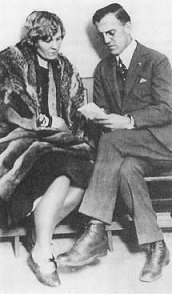
Ruth may have had several affairs before another couple from her “set” arranged a blind date with Henry Judd Gray in “Henry’s Swedish Restaurant”, but if so none would match this one in intensity. Like her, Judd was married and had a child. They bonded over a mutual detestation of their spouses, both of whom they regarded as boring and horrendously conventional. Eventually the relationship turned physical, reportedly being first consummated in Judd’s office at the Bien Jolie Corset Company. After that, the pair began to meet up at Manhattan hotels. Judd even snuck into the house at Queen’s Village, when Albert was out of town. The pair even had nicknames for each other – Judd was “Bud”, while Ruth (despite being two years his junior) was “Momsie”.
Exactly when in their affair the idea of murdering Albert was first proposed is impossible to say. Judd and Ruth would later give hugely different accounts of their relationship, as each tried to implicate the other. It’s generally accepted that Ruth was the most active in laying the ground work. She made sure that Albert had life insurance in place, and persuaded the insurance agent (who later was charged with forgery) to increase the coverage to $48,000 (across thre separate policies) without Albert’s knowledge. The insurance had a special clause in the case of sudden death – the “double indemnity” clause would pay out twice the amount, ninety-six thousand dollars. In today’s money, that would be worth at least a million dollars.

According to Judd, Ruth made several independent attempts to murder her husband before she came to him for help. These included engineering gas leaks while he was asleep, knocking the jack out from his car while he was under it, and closing the garage doors while his engine was running. Albert survived all of these without even realising they were anything more than accidents. She also allegedly put rat poison in his coffee, but this only gave him indigestion. When her friends inquired about Albert’s health, she told them he was much worse off than he was and let them think he might die suddenly, but in truth he seemed invulnerable to everything that she threw at him. So she turned to Judd for help, and the pair hatched a plan to commit murder.
On the night of Saturday, March 19th 1927 Judd let himself into the empty house in Queen’s Island. Albert and Ruth Snyder were out at a party with Lorraine, and Ruth intended that Albert would return home drunk. Josephine were conveniently away. At 2am the Snyders returned, with Albert collapsing into bed to sleep it off. Judd was hiding in a spare bedroom, where Ruth found him as arranged after she put Lorraine to bed. The pair (after some last minute discussions and, according to one account, having sex) headed to the master bedroom. There Judd struck Albert on the head with a lead weight he’d brought with him. He didn’t strike hard enough to kill him though, and the pair were forced to sedate him with a chloroform-soaked rag. Once he was unconscious they strangled him with a piece of picture wire. Once Albert was dead, the pair hid Ruth’s jewelry box to make it look like a burglar had taken it before Judd tied her up and gagged her. Then he left.
After she’d given Judd a few hours to get clear, the bound and gagged Ruth started banging on the wall, waking Lorraine. The nine year old girl found her mother in the hall, and when she loosened the gag Ruth told her to run and phone a neighbour. When Louis Mulhauser arrived, he untied Ruth and she told him that burglars had struck her on the head and tied her up. Louis found Albert’s corpse, and called the police. Ruth told them that she had overheard noises in the hall and gone out to find two men in the hall, one of whom grabbed her neck and struck her head. From then she remembered nothing until she had awoken tied up and had woken Lorraine up. All she could tell them of the men was that one was very tall with a moustache, and that they “looked Italian”.
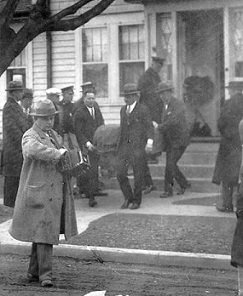
The story of this brutal murder was immediately a major news story, and the papers were more than happy to make up details (of, for example, police interviews) where they lacked facts. As such, it’s somewhat difficult to pick out the pieces. At first they were drawn down the rabbit-hole of investigating another guest at the party who had argued with Albert, but this was soon eliminated. Burglary, the motive Ruth and Judd tried to set up, was also considered unlikely due to the lack of actual theft and the fact there were no signs of forced entry. It wasn’t long before they latched on to Judd Gray – though there are multiple stories of how they did so. The most mundane is that they found his name in Ruth’s papers, and that her reaction when asked about him made them investigate further. At the other extreme, the most dramatic is that they found a piece of monogrammed jewelry that had belonged to Julie Gishard and asked Ruth who “JG” was. Her response of “What’s Judd Gray got to do with this?” was damning.
The truth is probably more that in these pre-Miranda days the police simply sweated the truth out of Ruth. Judd wasn’t hard to find, even though he had fled New York City for the nearby town of Syracuse. Not only had he asked a policeman near the Snyder house for directions to the train station, at the other end he’d given the taxi driver who took him to his hotel a minuscule enough tip to ensure he’d be remembered. It wasn’t long until he was tracked down and arrested. He had an “alibi”, of sorts – letters sent from Syracuse that “proved” he had been there the whole time. Of course, the police told him they’d read the same dime novels he had and were more than familiar with the trick of getting somebody to send letters for you. Now that they had Judd and Ruth in custody, the police just lied to them and told each that the other had already confessed. With no lawyers present, the two were soon falling over themselves to assign all the blame they could to the other.

This pattern played itself out in the trial. It opened in May of 1927, and was huge news. The gallery was packed with every aspiring writer in New York, desperate to mine it for inspiration, along with every celebrity reporter in an era of celebrity reporters. Both Ruth and Albert knew that their only hope of avoiding execution was to throw all the blame on the other, and both went into the strategy full tilt. In Ruth’s version of the story, Judd had seduced her and forced her to take part in his murderous schemes. Clad in a demure black dress and wearing a rosary, she told the court of how he had sent her poison to give Albert and had even hired hitmen to try and kill him. Unfortunately for her, she was hamstrung by her defence lawyer who had decided that she should not be too graphic. She was also disadvantaged by her gender – the American press loved nothing more than tearing an “evil woman” to shreds. One over-excitable tabloid dubbed her “Ruthless Ruth, the Viking Ice Matron of Queens’ Village.” Another paper even hired a phrenologist to practice his pseudoscience on a photograph and predictably declare her to have:
the character of a shallow-brained pleasure-seeker, accustomed to unlimited self-indulgence, which at last ends in an orgy of murderous passion and lust, seemingly without a parallel in the criminal history of modern times.
In contrast, Judd Gray received a lot of sympathy from the press. The detectives who had interrogated him all told the reporters he was a likable fellow, and the press soon characteried him as a “decent fellow” and “a good family man”. (The fact that he had cheated on his wife was brushed aside just as Ruth’s adultery was constantly held against her. The double standard was alive and well in 1927.) Apart from the general sexism of the time, his story of a good man drawn into evil ways by the sexual wiles of a bad woman fit perfectly into the narrative tropes of the popular fiction of the time. His description of their relationship could have come straight from a Theda Bara film – Ruth’s “hypnotic coercion” had taken over control of him and he had “acted as an automaton”. His lawyer laid it on just as thick:
That woman, like a poisonous snake, drew Judd Gray into her glistening coils, and there was no escape.
The papers ate it up, and editorials described Judd as a “model citizen”. Victory in the press, though, was hardly what mattered. Instead, it all came down to the jury’s verdict. The judge summed it up for them – if they believed that Ruth had been forced into the crime, or that Judd had been drunk and had not been in control of himself, then they could return a verdict of second degree murder. If not, they had to find them guilty in the first degree. After two hours of deliberation, the jury [2] found them both guilty in the first degree, and the judge sentenced them both to death.
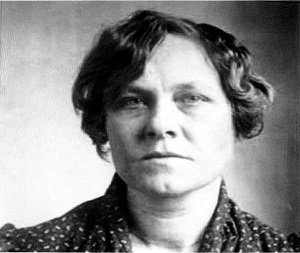
Ruth took the sentencing calmly. She may have thought it unlikely that the sentence would be carried out – it had been 28 years since New York had executed a woman. However her calmness itself was taken by the press and public as more evidence of her “cold-bloodedness”. From the condemned cell, she gave one paper her own account of events – the one she hadn’t been allowed to give on the stand. She told of Judd threatening to tell her husband if she’d broken off the affair, of her fear of losing her daughter in a divorce, of her husband’s constant mental cruelty towards her that had driven her into the arms of another man. Her story even matched the evidence better than Judd’s – after all, he was the one who had brought the murder weapon, and who had arranged his alibi (pitiful as it was) before the crime. It probably wouldn’t have made a difference in the trial though. To the hyper-conservative America of 1927, Ruth’s true crime had been adultery, and she had been tainted by that throughout the trial. In the previous century in England, a woman who killed her husband was guilty of “petty treason” – the crime of a servant killing their master. They had been burned at the stake for that crime, and now the public seemed happy to see Ruth burn in the electric chair. Some even spoke of it as a natural consequence of equal suffrage – if women wanted to participate equally in society, they should be prepared to face the full consequences of breaking its rules.
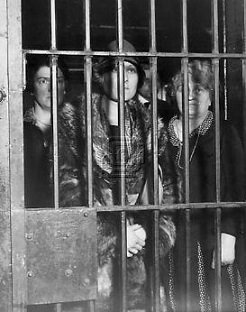
While Ruth was in prison, her daughter Lorraine’s future was debated in the courts. Both Albert’s parents and Ruth’s mother Josephine sought custody. Josephine had been far more involved in the girl’s life and was the natural candidate, but Ruth’s actions obviously spoke against her. In the end though the judge decided in favour of Grandma Brown. Equally debated were the life insurance policies that Albert had taken out, to which Lorraine was now the beneficiary. One policy was paid out, but that money was eaten up by legal fees. The case dragged on until years later and the other two were not paid out in the end. The later life of Lorraine Snyder is not recorded. We know that Ruth refused to let her daughter visit her in jail, though she wrote a letter to be given to her “when she’s old enough to understand”. Whether Lorraine ever read the letter, and what it said, we don’t know.
Ruth’s appeal for clemency first went to Theodore Roosevelt, then governor of New York. Teddy, of course, was not a man to mince his words and said “A woman is deserving of the same blame as a man”. By early January, as the delays the lawyers threw up began to run out, a fresh appeal went to the new governor Al Smith. He was more gracious in his response – saying that the prospect of executing a woman was so distasteful that he had hoped the appeal would contain some new grounds that would allow him to overrule it. But it did not, and he did not. On the 12th January 1928 the sentence was carried out. Ruth went to the chair calmly, though some newspapers (who felt that the tale deserved a more moralistic ending) instead described her as in floods of tears, and even rewrote their accounts of the sentencing to have her throw hysterics in the courtroom. She sat in the chair, and after two minutes of coursing electricity, she was dead. Within a few minutes Judd Gray was in the same chair, and within another few minutes he too was dead.
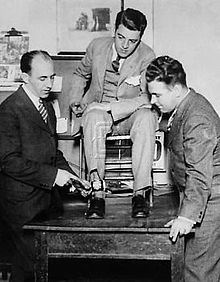
The execution of Ruth Snyder may not have been the cause of much controversy in the press beforehand, but it was to be the source of a major controversy afterwards. One of the witnesses was Tom Howard, a journalist from Washington with a miniature camera strapped to his leg. He had a single shot to take his picture, and managed to capture Ruth just as the electricity ran through her. The next day the picture was on the front page of the New York Daily News. The picture brought Howard prestige and fame, led to the New York authorities unsuccessfully trying to prosecute him and the newspaper, and further added to the infamy of Ruth Snyder and the legend of this case.
The most famous product of that legend is probably the novel Double Indemnity by James Cain, and the Billy Wilder film based on it that came out in 1944 – possibly the first true example of film noir. He was far from the only person to take inspiration from “the Snyder case” – which the police and press had at the time dubbed “the Dumb-bell murder”, because of all the mistakes Ruth and Judd had made. It seems, though, that their biggest mistake was to be fitting a little too neatly into people’s preconceptions of the world. They were murderers. Their motives were sordid, their crime unforgivable. But in the end, what they really died for was to satisfy the thirst of the public for a satisfying end to the story they’d created.
Images via murderpedia.
[1] At the time it was a literary magazine (which had originally published War Of The Worlds, among others) and not yet specifically targeted at female readers.
[2] All middle-aged family men, of course – in fact, that was the law in New York at the time. Judd may have been tried by “a jury of his peers”, but Ruth was not.

This journalist is way off base from other stories I read she passed out when the sentence was read out where do these journalists come from they don’t check their Source at all I think they make crap up as they go along just to make it interesting how unprofessional
Those other stories were wrong, which is why I linked my source. Other contemporary newspaper accounts agree. Thanks for your input, Gary!
Theodore Roosevelt was dead in 1927/1928. I think he died in 1919, so he wasn’t the governor of New York and could not have made any comments about the trial and/or death sentences. Alfred Smith was the governor throughout all the legal proceedings.